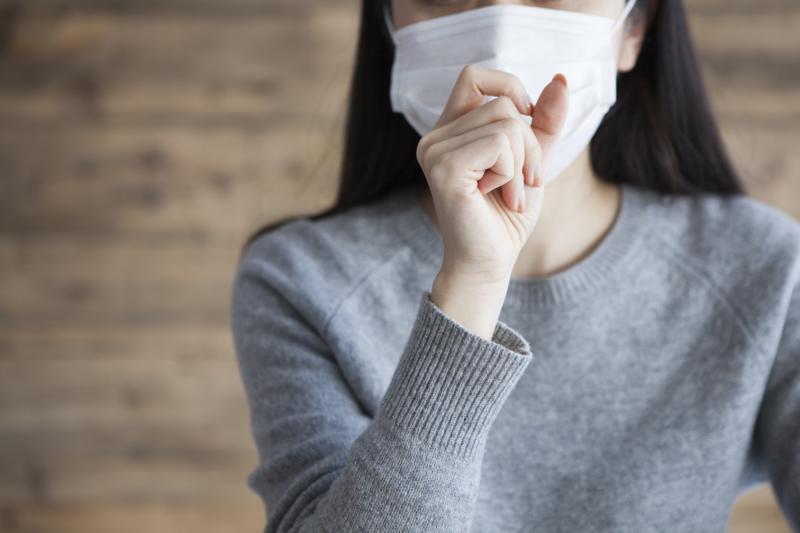
Use of surgical or cotton masks does not effectively prevent the spread of SARS-CoV-2, the virus the causes the novel coronavirus disease (COVID-19), from coughs of infected patients to the environment and external mask surface, according to the results of a controlled comparison study.
“The size of the SARS–CoV particle from the 2002–2004 outbreak was estimated as 0.08 to 0.14 μm,” the researchers said. “[A]ssuming that SARS-CoV-2 has a similar size, surgical masks are unlikely to effectively filter this virus.” [N Engl J Med 2003;348:1953-1966]
Four patients with COVID-19 were admitted to negative pressure isolation rooms to compare their use of disposable surgical masks (180 mm x 90 mm; three layers: inner surface mixed with polypropylene and polyethylene, polypropylene filter, and polypropylene outer surface) with reusable 100-percent cotton masks (160 mm x 135 mm; two layers).
A petri dish containing 1 mL of viral transport media (sterile phosphate-buffered saline with bovine serum albumin, 0.1%; penicillin, 10,000 U/mL; streptomycin, 10 mg; and amphotericin B, 25 µg) was placed approximately 20 cm from the patients' mouths. Patients were then told to cough five times each onto the petri dish while wearing the following sequence of masks: no mask, surgical mask, cotton mask and no mask again. Each of the coughing episode used a separate petri dish.
The researchers then swabbed with septic Dacron swabs in this sequence: outer surface of surgical mask, inner surface of surgical mask, outer surface of cotton mask and inner surface of cotton mask.
Nasopharyngeal and saliva samples from the participants had median viral loads of 5.66 log copies/mL and 4.00 log copies/mL, respectively. The median viral loads after coughs were 2.56 log copies/mL without a mask, 2.42 log copies/mL with a surgical mask and 1.85 log copies/mL with a cotton mask. [Ann Intern Med 2020;doi:10.7326/M20-1342]
Of note, all swabs from the outer mask surfaces of the masks tested positive for SARS-Cov-2, while most swabs from the inner surfaces were negative. Experimental error or artifact did not seem to cause such finding of virus on the outer mask surface, but the mask’s aerodynamic features potentially could, according to the researchers.
“A turbulent jet due to air leakage around the mask edge could contaminate the outer surface,” they explained. “Alternatively, the small aerosols of SARS–CoV-2 generated during a high-velocity cough might penetrate the masks.”
This explanation, however, is only valid if the coughing patients did not exhale any large-sized particles, which would be expected to be deposited on the inner mask surface despite high velocity. Considering this, hand hygiene after touching the mask should always be practiced, the researchers said.
These findings are consistent with those of previous studies, which found that surgical masks did not adequately filter aerosols measuring 0.9, 2.0 and 3.1 μm in diameter, as well as particles 0.04 to 0.2 μm in size. [Am J Infect Control 2008;36:276-282; Ann Occup Hyg 2008;52:177-185]
The current experiment was limited by the exclusion of N95 masks. It also did not demonstrate the actual transmission of infection from COVID-19 patients wearing different types of masks.
“We do not know whether masks shorten the travel distance of droplets during coughing,” the researchers said. “Further study is needed to recommend whether face masks decrease transmission of virus from asymptomatic individuals or those with suspected COVID-19 who are not coughing.”